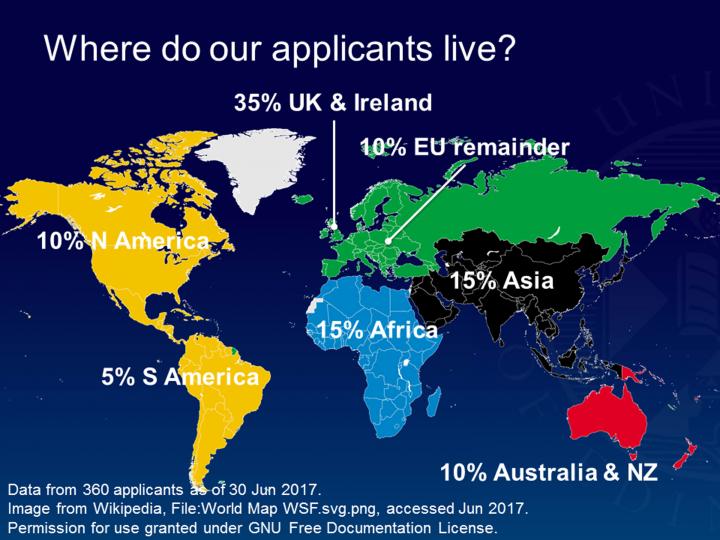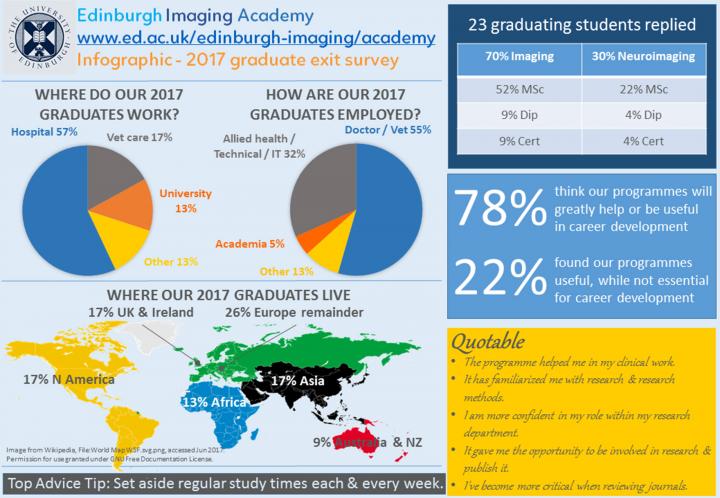Student demographics
Find out where our applicants were born & where they live.
Our applicants were born in & live all over the world:
Nationalities who apply, by region:

Domiciles by region 2017:

Infographic - 2017 graduate exit survey
We surveyed our graduating class of the 2016-2017 academic year & have summarized the findings in our infographic.

What was the top tip from our 2017 graduates to future students?
-
Set aside regular study times each & every week.
23 graduating students replied
-
70% were enrolled on Imaging programmes, with award distributions as follows:
-
52% exited with a Masters
-
9% exited with a Certificate
-
9% exited with a Diploma
-
- 30% were enrolled on Neuroimaging programmes, with award distributions as follows:
-
22% exited with a Masters
-
4% exited with a Diploma
-
4% exited with a Certificate
-
78% think our programmes will greatly help or be useful in career development
22% found our programmes useful, while not essential for career development
Where do our 2017 graduates work?
- 57% in hospitals
- 17% in a veterinary care setting
- 13% in universities
- 13% in a variety of other settings
How are our 2017 graduates employed?
- 55% are doctors or vets
- 32% work in the allied health professions, technical & IT fields (nursing, radiography, programming, image processing)
- 5% work in academia
- 13% are employed in a variety of other professions
Where do our 2017 graduates live?
- 17% UK & Ireland
- 26% Europe
- 17% Asia
- 17% North America
- 13% Africa
- 9% Australia & New Zealand
What did our 2017 graduates have to say about their experience on our programmes?
- The programme helped me in my clinical work.
- It has familiarized me with research & research methods.
- I am more confident in my role within my research department.
- It gave me the opportunity to be involved in research & publish it.
- I've become more critical when reviewing journals

